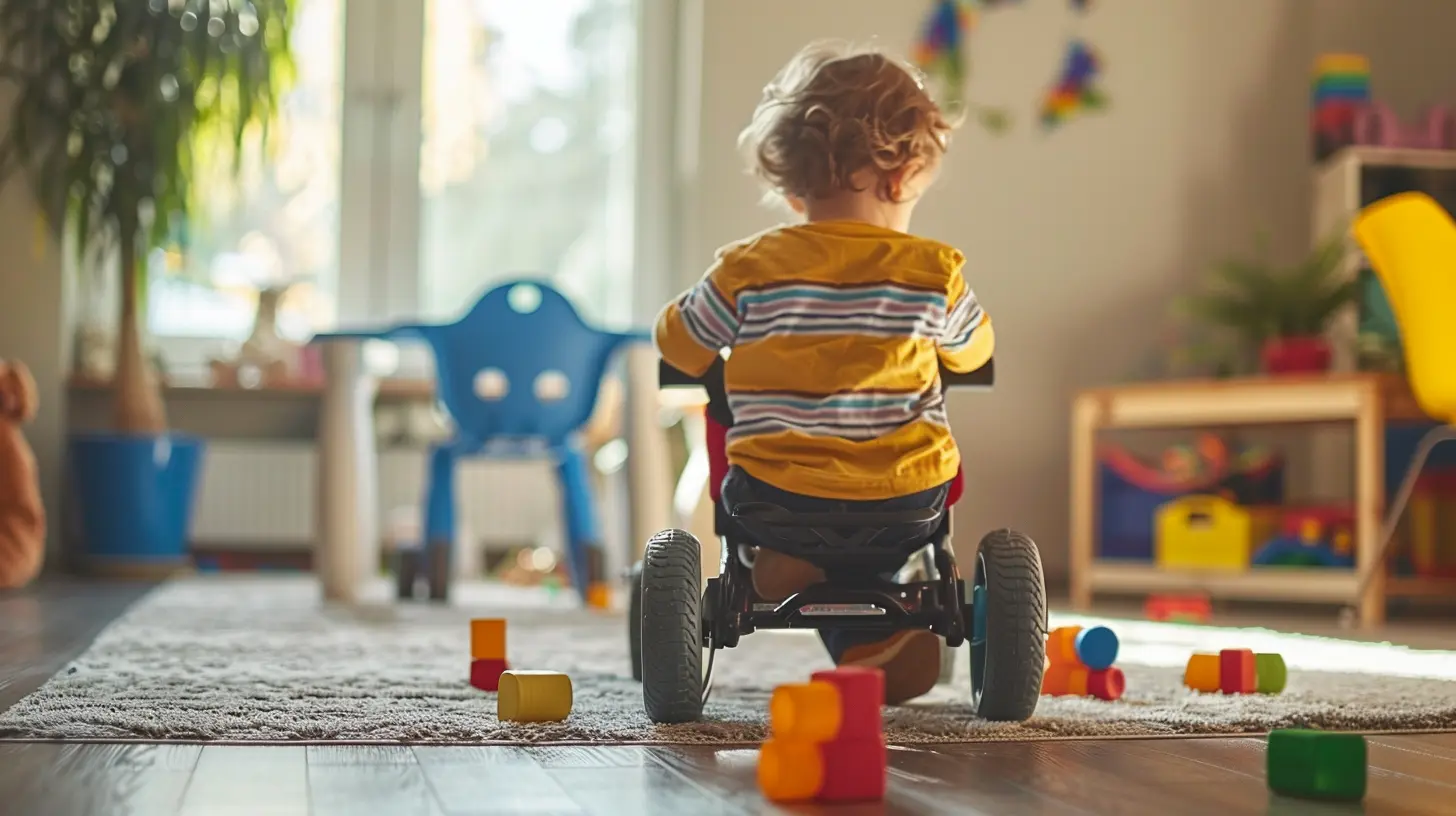How to Encourage Your Child’s Independence During Daily Routines
15 June 2025
Raising kids isn’t just about love, rules, and making sure they eat their veggies — it’s also about one of the most magical gifts you can give them: independence. That growing sense of "I can do it myself!" is more than just adorable — it’s a stepping stone on the path to confidence, capability, and resilience.
But let’s be honest — building independence doesn’t happen overnight. It emerges slowly, like sunlight creeping through the blinds on a sleepy morning. It takes patience, presence, and a little bit of letting go (even when your inner control-freak wants to hover).
So how do you actually help your child become more independent during those everyday moments — tying shoes, brushing teeth, packing bags, choosing clothes? Hang tight, because we’re about to unpack it all.
🌱 Why Independence Matters (Yes, Even in the Small Stuff)
Think back to when you first learned to ride a bike. The wobble, the fear, your heart pounding — and then, the whoosh of freedom when you finally coasted on your own. That’s the magic of independence.For kids, daily routines are like the training wheels. When they master little things — brushing their own teeth or choosing what to wear — it builds:
- Confidence
- Problem-solving skills
- Responsibility
- A sense of self-worth
The small wins stack up like building blocks. And suddenly, your once-clingy toddler is making toast and packing their backpack without a prompt. (Cue the proud parent tears.)
🕰️ Start Small: Independence Doesn’t Mean "Do Everything Alone"
Let’s get one thing straight: encouraging independence doesn’t mean tossing your four-year-old the car keys and wishing them luck. It means offering age-appropriate responsibilities, guiding gently, and celebrating effort — not perfection.The key? Start where they are.
Here’s a quick snapshot of what that might look like:
| Age | What They Can Do (With a Little Support) |
|-----|------------------------------------------|
| 2-3 | Put toys away, help dress themselves |
| 4-6 | Brush teeth, set the table, choose clothes |
| 7-9 | Make simple snacks, pack school bag |
| 10+ | Plan a routine, manage homework time |
Timelines vary, and every kid blooms in their own time. But giving them the space to try — and even fail — is where the real magic happens.
🌞 Morning Routines: Planting Seeds of Confidence
Let’s talk about the battleground that is weekday mornings. You’re racing against the clock, trying to avoid meltdowns over mismatched socks and soggy cereal. We’ve all been there. But those groggy mornings are actually goldmines for building self-reliance.☀️ Let Them Choose Their Outfit
Even if it’s mismatched. Even if it’s superhero pajamas for the third day in a row. Letting your child pick their clothes gives them a sense of control. Lay out two options if they’re younger to avoid decision overload.> “Would you like the red shirt or the blue one?” Boom. Power in their hands, within boundaries.
🪥 Make Tooth-Brushing a Game
Instead of nagging, turn it into a challenge. Set a timer, play a toothbrushing song, or do a silly "brush dance" together. The goal? Making the mundane feel magical.🧦 Create a Routine Chart
Kids thrive on routine. Visual charts with pictures are especially helpful for younger kids who can’t read yet. Think of it as a treasure map with each task being a step closer to the prize — whether that’s extra playtime, a sticker, or simply your praise.
🧃 Meal Times: Spoons, Sandwiches, and Self-Sufficiency
You don’t need a Pinterest-worthy lunchbox to teach independence. Meal routines are stuffed with opportunities to give your child ownership, starting with the simple stuff.🍽️ Let Them Serve Themselves
Yes, it may get messy. But letting your toddler spoon applesauce into their bowl or your grade-schooler pour their own cereal encourages trust and coordination.Pro tip? Stick to child-sized portions and tools — kid-friendly cups, small serving spoons, easy-to-open containers. Setup matters.
🥪 Involve Them in Meal Prep
Invite them to help butter toast, rinse veggies, or peel bananas. It takes longer, sure. But you’re trading speed for skills — and confidence that sticks.Plus, the more involved they are, the more likely they are to actually eat what they helped prepare. Win-win!
🧺 Chores: Yes, Kids Can Help (And Even Want To)
Here’s a truth bomb — kids want to help. It's how they feel useful, valued, and part of the team.Chores don’t have to feel like punishment. Frame them as "family responsibilities" instead of tasks. You’re not the boss delegating grunt work — you’re raising a future adult who knows how to pitch in.
🧹 Age-Appropriate Chores
Start with simple tasks and build up:- Toddlers: Put toys in bins, wipe up spills with small cloths.
- Preschoolers: Match socks, water plants, clear their place.
- Grade-schoolers: Fold towels, feed pets, vacuum small areas.
It’s all about consistency. Keep expectations clear, provide encouragement, and avoid the temptation to "fix" their efforts unless safety is a concern.
> Spoiler: The towels won’t be folded to Pinterest standards. But they’ll be folded with pride.
🌙 Bedtime: Fostering Calm and Ownership
The end of the day is just as powerful as the start. Bedtime routines help your child wind down, feel safe, and gain control over their own well-being.🧸 Let Them Guide the Routine
Rather than dragging them through a checklist, invite them to lead.- “What comes next — pajamas or story?”
- “Would you like to read or be read to tonight?”
Giving them small choices at bedtime helps them feel secure and in control, which makes bedtime battles fewer and far between.
📚 Encourage Wind-Down Habits
Keep bedtime activities predictable. Whether it’s reading, singing a song, or a gratitude journal for older kids, these rituals build emotional independence, too.> Bonus: When kids know what’s coming, they resist less. That predictability is actually comforting.
🧠 Think Long-Term: Independence Equals Resilience
Encouraging independence today means raising a problem solver, a decision-maker, and a resilient human tomorrow.Sure, it’s quicker to tie your kid’s shoes, pour their juice, or pack their bag. But when you do all the things for them, they learn that they’re not capable.
Every time you step back — even when it's messy — you're sending a louder message: “I believe in you.”
Let them take risks within limits. Let them make mistakes. Let them figure stuff out. These day-to-day habits are more than just routine — they’re practice for life.
🎒 Tips for Success (Without Losing Your Sanity)
Here are seven go-to strategies to help you stay the course:1. Be patient — Growth is rarely linear.
2. Praise effort, not results — “You really worked hard on that!” means more than “Good job.”
3. Give clear instructions — "Put your shoes in the basket" beats "Clean up."
4. Use timers or music to transition — Time limits can ease resistance.
5. Model independence — Show them how you handle things, from cooking meals to planning your day.
6. Let them help make decisions — Give controlled choices.
7. Breathe and let go a little — Imperfection is part of progress.
💬 Final Thoughts: It’s a Journey, Not a Sprint
At the end of the day, encouraging your child’s independence isn’t about expecting perfection — it’s about planting seeds and nurturing roots.Yes, it takes more time. Yes, it can be a little chaotic. But one day, you’ll look over and see your child confidently brushing their teeth, packing their lunch, or racing out the door fully dressed without the usual chaos — and you’ll feel it deep in your soul.
That’s the payoff. That’s the dream.
So take a breath, step back, and let them bloom.
all images in this post were generated using AI tools
Category:
Special NeedsAuthor:

Noah Sawyer
Discussion
rate this article
2 comments
Layne Wells
Empower their journey! Small steps lead to big adventures in independence!
June 18, 2025 at 3:06 PM

Noah Sawyer
Thank you! Encouraging small steps truly fosters a child's confidence and independence. Every little achievement counts!
Lisa Hill
Thank you for this insightful article! Encouraging independence in our children can be challenging yet rewarding. I appreciate the practical tips shared here; they truly resonate with my journey as a parent. Looking forward to trying these strategies!
June 16, 2025 at 4:05 AM

Noah Sawyer
Thank you for your kind words! I'm glad you found the tips helpful and wish you all the best on your journey to encourage your child's independence!


